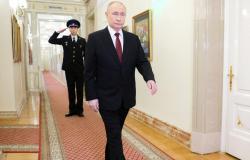
China has made the biggest restructuring of its military in the last decade, and at the center of all the changes has been put the latest technology. The role of these changes is to prepare the Chinese military for modern warfare, described in official Chinese documents as “intelligent warfare”, which may take place in the context of tensions over the fate of Taiwan, CNN said in an extensive analysis of the changes decided in Beijing.
Xi Jinping and the Chinese ArmyPhoto: Li Gang / Xinhua News / Profimedia Images
In a surprise move last week, Chinese President Xi Jinping disbanded the Strategic Support Force (SSF), a military branch he created in 2015 to integrate the People’s Army’s space, cyber, electronic and psychological warfare capabilities. Liberation (PLA), as part of a radical restructuring of the armed forces
In its place, Xi established the Information Support Force, which he said was “a new strategic arm of the PLA and an essential foundation of the coordinated development and application of the network information system.”
How the new division of the Chinese army works
The new force will play an important role in helping China’s military “fight and win in modern warfare,” Xi said at a ceremony last Friday.
At a press conference on the same day, a spokesman for the Ministry of Defense stated that the SSF is divided into three units – the Information Support Force, the Aerospace Force and the Cyberspace Force – which will answer directly to the Central Military Commission, the body at the top of the chain military command led by Xi.
Under the new structure, the PLA now consists of four services — the army, navy, air force and missile force — plus four divisions: the three units spun off from the SSF and the Joint Logistics Support Force, according to spokesman Wu Qian.
Chinese military experts say the reorganization increases Xi’s direct control over the PLA’s strategic capabilities and underscores China’s ambitions to better master AI and other new technologies to prepare for what they call the “smart war” of the future.
The restructuring follows a major purge carried out last year following acts of corruption. Several powerful generals have been killed and the purge has shaken the missile force, an elite branch that oversees China’s rapidly growing arsenal of nuclear and ballistic missiles.
Analysts who have long monitored the actions of the PLA say the latest reorganization is unlikely to be the result of recent purges on corruption grounds, but rather a reflection that the SSF has not been an ideal organizational format for the Chinese military.
“I think the new structure gives Xi a chance to take a closer look at what’s going on in the aerospace force. cyberspace and network management. Those functions will now be overseen at his level and not through the Strategic Support Force, which served as an intermediary, explained Joel Wuthnow, a senior research fellow at the Pentagon-funded National Defense University.
The ’embarrassing’ incident with the surveillance balloon
Xi’s inability to monitor what the military is doing poses great risks, especially at times of heightened tension and deep mistrust between Beijing and Washington.
Last year, the US shot down a Chinese surveillance balloon that crossed over US territory. The incident caused strong tensions between the two great powers.
Although US intelligence officials said the balloon was part of an extensive surveillance program run by the Chinese military, Xi may not have been aware of the mission. US President Joe Biden said last June that the Chinese leader did not know about the balloon and was “very embarrassed” when it was shot down.
James Char, a researcher at Singapore’s S. Rajaratnam School of International Studies, said the deployment of strategic reconnaissance during the spy balloon incident would have been the responsibility of the SSF’s Aerospace Systems Department. It is not clear, however, whether the balloon incident contributed to Xi’s decision to disband the SSF, but it is a scenario discussed by analysts.
Wuthnow, of the National Defense University, said the newly created intelligence support force would likely handle communications and network defense for the PLA.
“Addressing these issues is of enormous importance to the PLA in any possible future conflict. The Chinese paid special attention to these functions and probably drew lessons for their own organization from the war in Ukraine,” he said. “So it makes sense as the president [Comisiei Militare Centrale] to want to play a more direct role in this field”.
“Smart War”
The latest change is likely the result of an ongoing review of how the military can better meet the ruling Chinese Communist Party’s strategic goals, Char says.
“I suppose the reorganization better reflects the importance the PLA has placed on accelerating the development of intelligent warfare” brought on by a new round of technological and industrial progress, he said.
The concept of “smart war” gained attention in a 2019 official document, called a “white paper”, which describes the design of China’s defense. He highlighted the military application of cutting-edge technologies such as AI, quantum information, big data and cloud computing.
“The landscape of international military competition is undergoing historic changes. New and high-tech military technologies, with information technology as the core, are advancing day by day, and there is a prevailing trend to develop precision, intelligent, stealth or unmanned weapons and equipment,” the book states.
“Warfare is accelerating its evolution in form to information warfare, and intelligent warfare is on the horizon,” the book further states.
The creation of the Information Support Force as a new branch directly under the Central Military Commission also underscores the importance of information dominance in modern warfare.
“Modern wars are competitions between systems”
A commentary in the PLA Daily, the official newspaper of the Chinese military, describes network information technology as the “biggest variable” in improving combat capability.
“Modern wars are contests between systems and structures, where control of information equates to control of the initiative in war,” the paper states.
The emphasis on informational dominance and “smart warfare” also has significant implications for any potential future conflict in the Taiwan Strait.
In the event of a conflict in Taiwan, the Information Support Force “will likely take over supporting the PLA’s attempts to dominate the information space before Beijing’s adversaries can do so,” Char concludes.
The Chinese Communist Party sees Taiwan as part of its territory, despite never having controlled it, and has vowed to take control of the island — by force, if necessary.
Tags: messages China sending biggest military restructuring decade Jinping control CNN analysis
-




